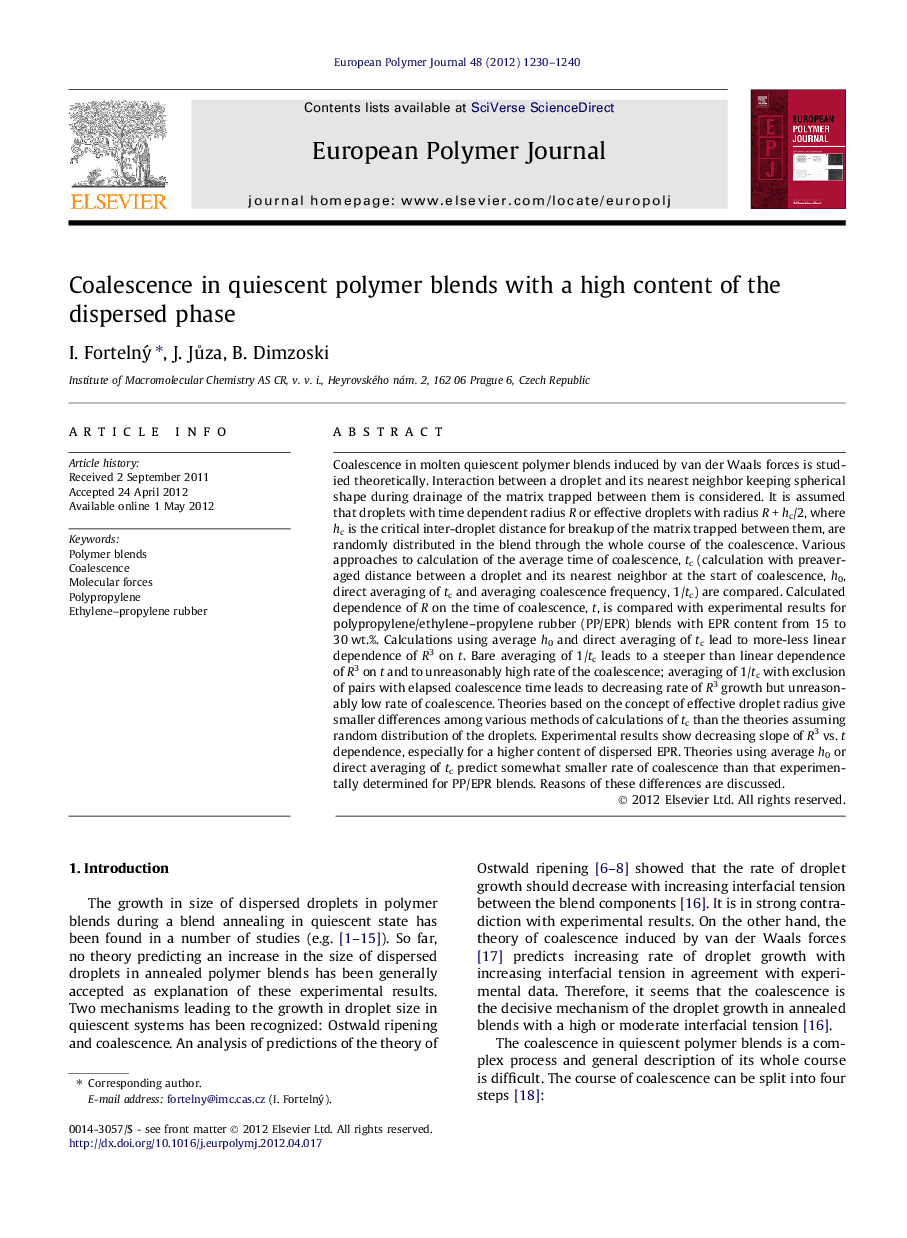| کد مقاله | کد نشریه | سال انتشار | مقاله انگلیسی | نسخه تمام متن |
|---|---|---|---|---|
| 1399729 | 984489 | 2012 | 11 صفحه PDF | دانلود رایگان |

Coalescence in molten quiescent polymer blends induced by van der Waals forces is studied theoretically. Interaction between a droplet and its nearest neighbor keeping spherical shape during drainage of the matrix trapped between them is considered. It is assumed that droplets with time dependent radius R or effective droplets with radius R + hc/2, where hc is the critical inter-droplet distance for breakup of the matrix trapped between them, are randomly distributed in the blend through the whole course of the coalescence. Various approaches to calculation of the average time of coalescence, tc (calculation with preaveraged distance between a droplet and its nearest neighbor at the start of coalescence, h0, direct averaging of tc and averaging coalescence frequency, 1/tc) are compared. Calculated dependence of R on the time of coalescence, t, is compared with experimental results for polypropylene/ethylene–propylene rubber (PP/EPR) blends with EPR content from 15 to 30 wt.%. Calculations using average h0 and direct averaging of tc lead to more-less linear dependence of R3 on t. Bare averaging of 1/tc leads to a steeper than linear dependence of R3 on t and to unreasonably high rate of the coalescence; averaging of 1/tc with exclusion of pairs with elapsed coalescence time leads to decreasing rate of R3 growth but unreasonably low rate of coalescence. Theories based on the concept of effective droplet radius give smaller differences among various methods of calculations of tc than the theories assuming random distribution of the droplets. Experimental results show decreasing slope of R3 vs. t dependence, especially for a higher content of dispersed EPR. Theories using average h0 or direct averaging of tc predict somewhat smaller rate of coalescence than that experimentally determined for PP/EPR blends. Reasons of these differences are discussed.
Figure optionsDownload as PowerPoint slide
Journal: European Polymer Journal - Volume 48, Issue 7, July 2012, Pages 1230–1240